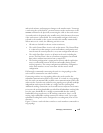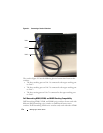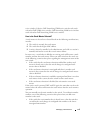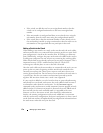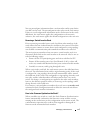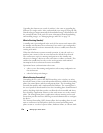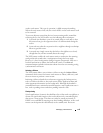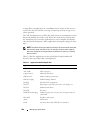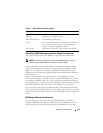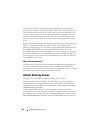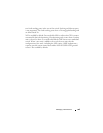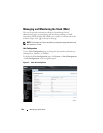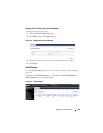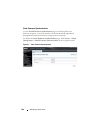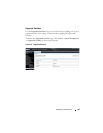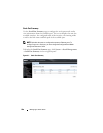
Managing a Switch Stack 181
Switch Stack MAC Addressing and Stack Design Considerations
The switch stack uses the MAC addresses assigned to the stack master.
If the backup unit assumes control due to a stack master failure or warm
restart, the backup unit continues to use the original stack master’s MAC
addresses. This reduces the amount of disruption to the network because
ARP and other L2 entries in neighbor tables remain valid after the failover to
the backup unit.
Stack units should always be connected with a ring topology (or other
biconnected topology), so that the loss of a single stack link does not divide
the stack into multiple stacks. If a stack is partitioned such that some units
lose all connectivity to other units, then both parts of the stack start using the
same MAC addresses. This can cause severe problems in the network.
If you move the stack master to a different place in the network, make sure
you power down the whole stack before you redeploy the stack master so that
the stack members do not continue to use the MAC address of the redeployed
switch.
NSF Network Design Considerations
You can design your network to take maximum advantage of NSF. For
example, by distributing a LAG's member ports across multiple units, the
stack can quickly switch traffic from a port on a failed unit to a port on a
OSPFv2 Neighbors and designated routers
OSPFv3 Neighbors and designated routers
Route Table Manager IPv4 and IPv6 dynamic routes
SIM The system's MAC addresses. System up time. IP address,
network mask, default gateway on each management
interface, DHCPv6 acquired IPv6 address.
Voice VLAN VoIP phones identified by CDP or DHCP (not LLDP)
NOTE: Each switch is assigned four consecutive MAC addresses. A stack of
switches uses the MAC addresses assigned to the stack master.
Table 9-1. Applications that Checkpoint Data
Application Checkpointed Data



